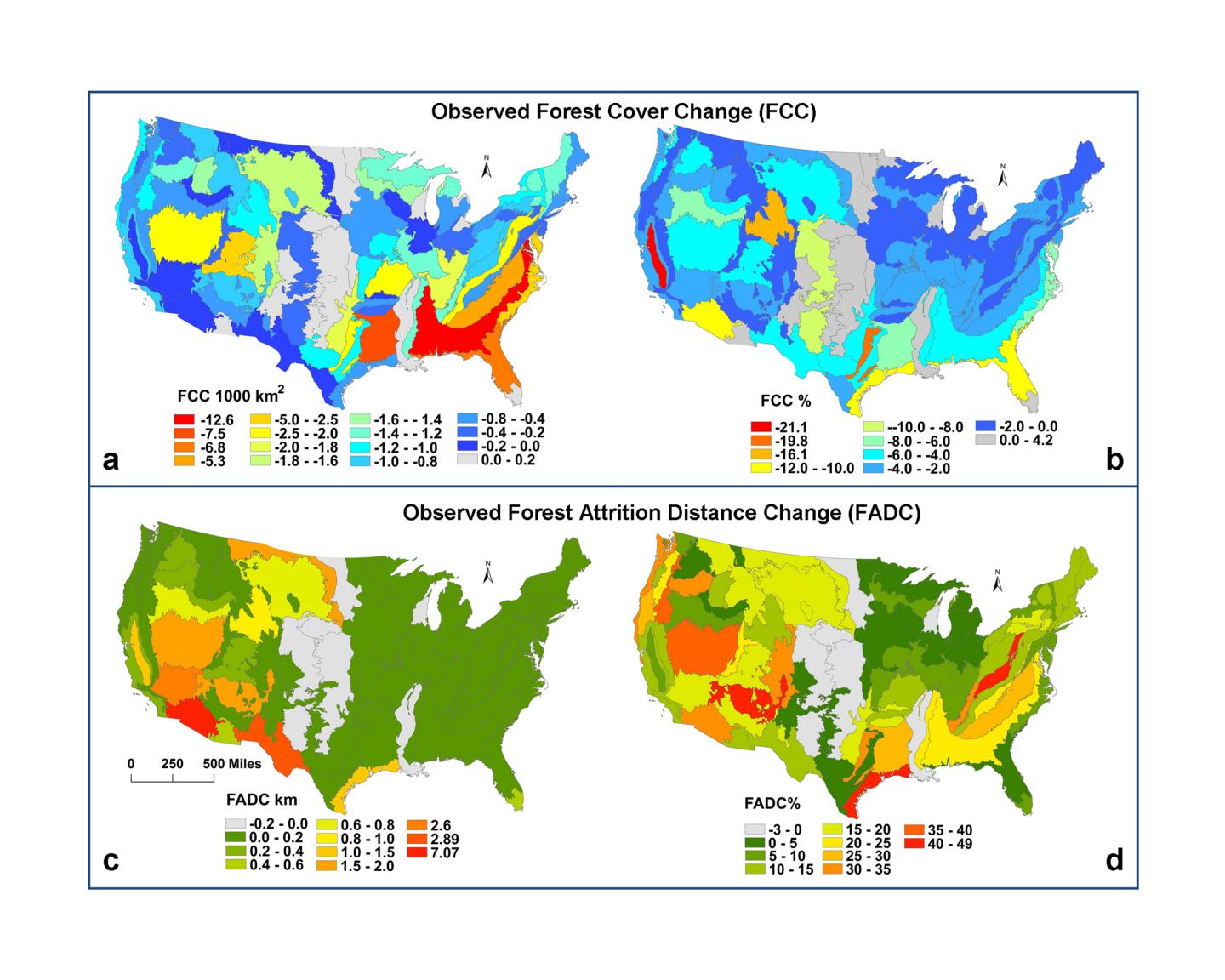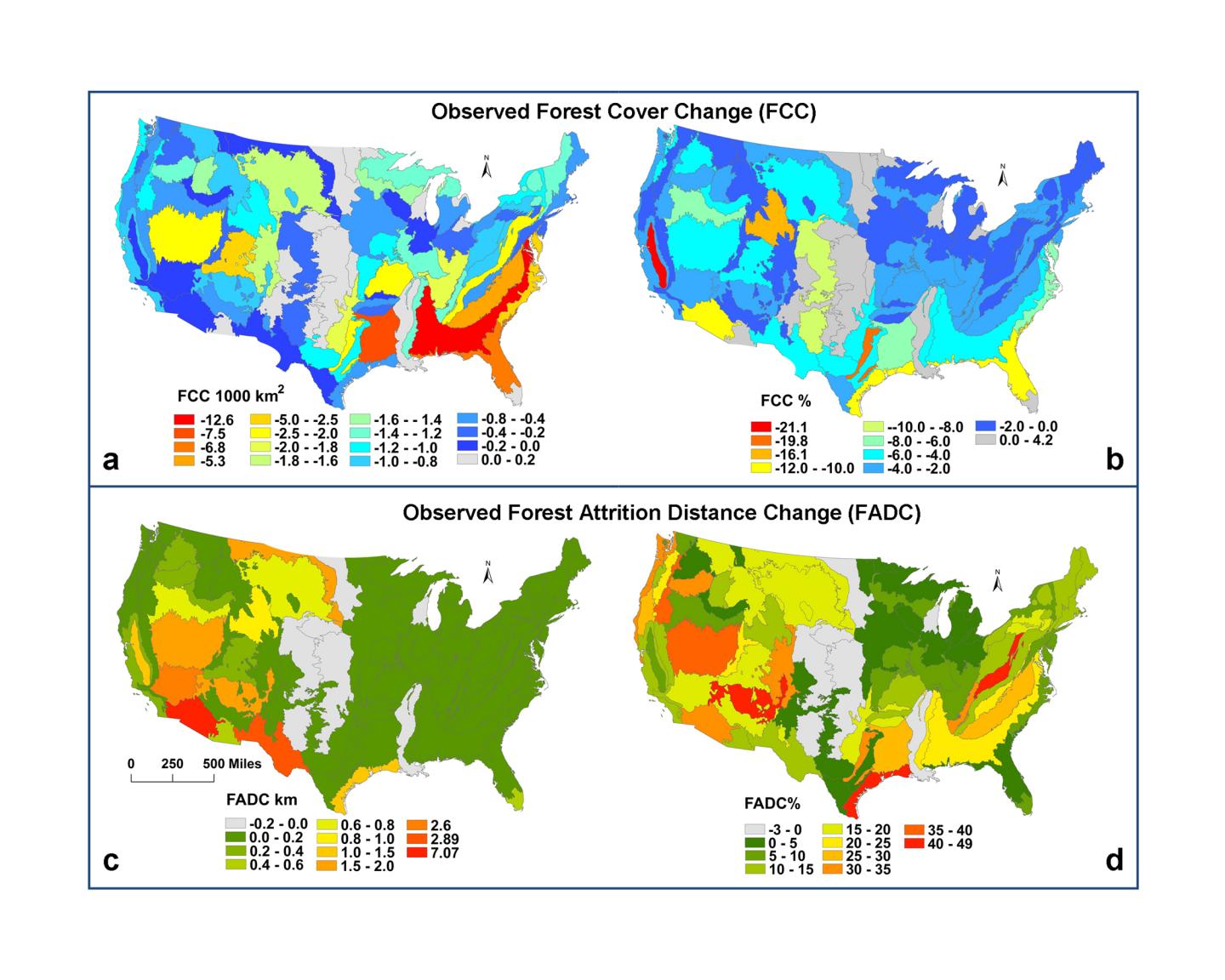
Credit: Yang S, Mountrakis G (2017)
During the 1990s, in the continental US key connecting forest patches have been lost resulting in an increase of the average forest distance by more than 500m, according to a study published February 22, 2017 in the open-access journal PLOS ONE by Sheng Yang and Giorgos Mountrakis from State University of New York College of Environmental Science and Forestry, Syracuse, USA.
Changes in national forest patterns other than fragmentation have been little studied. However, forest attrition — the complete removal of forest patches — can cause habitat losses as well as severe declines in the population sizes and richness of species. Based on an analysis of satellite-derived land cover data, Yang and Mountrakis studied geographic patterns of forest cover loss in the continental US during the 1990s.
The researchers found that the total loss of forest cover nationwide was 90,400 square kilometers during this decade, a 2.96% decline that is about the size of the state of Maine. In addition, forest attrition was considerably higher in the western US, rural areas and public lands. Investigating the reasons for these patterns, said the researchers, is essential for proactive conservation management. This work could be extended to forests worldwide using recent maps of global forest cover.
###
In your coverage please use this URL to provide access to the freely available article in PLOS ONE: http://dx.doi.org/10.1371/journal.pone.0171383
Citation: Yang S, Mountrakis G (2017) Forest dynamics in the U.S. indicate disproportionate attrition in western forests, rural areas and public lands. PLoS ONE 12(2): e0171383. doi:10.1371/journal.pone.0171383
Funding: This work was supported by the National Urban and Community Forestry Advisory Council, U.S. Forest Service and a SUNY ESF Graduate Assistantship. We would like to thank Dr. Colin Beier and Dr. David Nowak for their insights and Dr. Steve Stehman for statistical support.
Competing Interests: The authors have declared that no competing interests exist.
Media Contact
Beth Jones
[email protected]
############
Story Source: Materials provided by Scienmag





